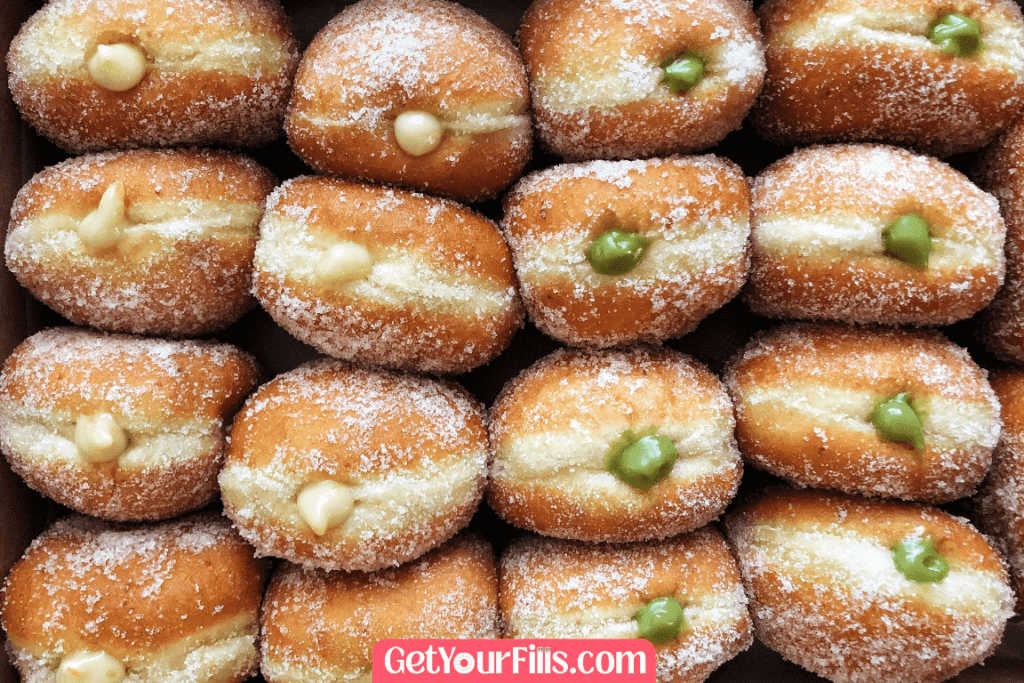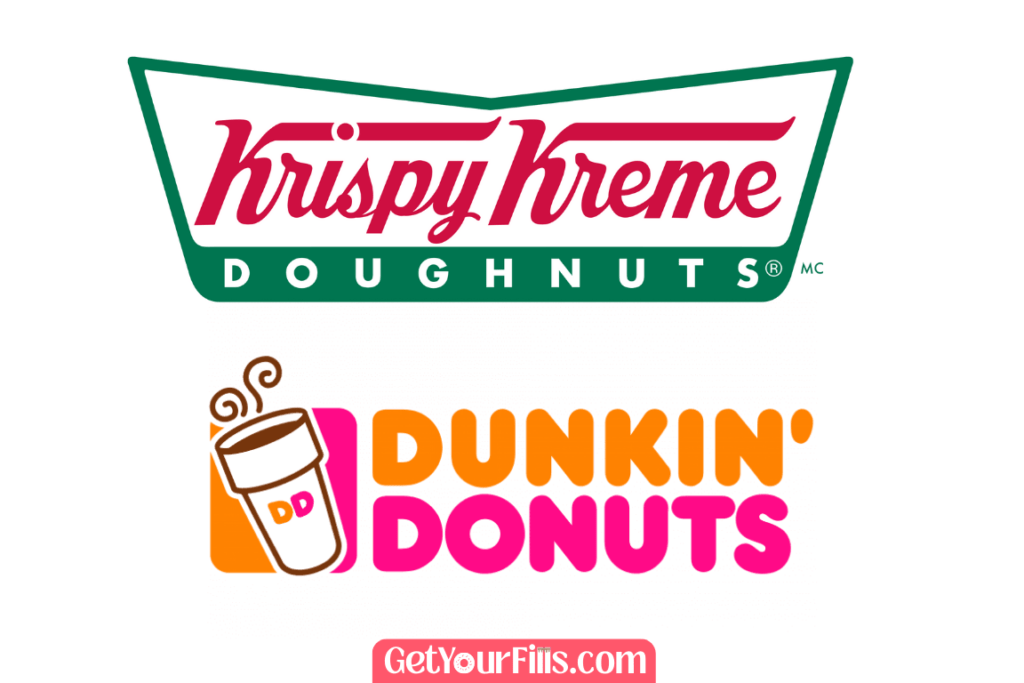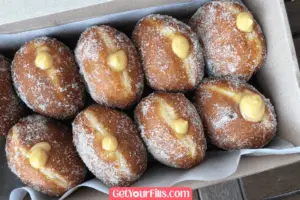Donuts have been a popular treat for centuries, but it wasn’t until the 19th century that the concept of a filled donut emerged. Since then, filled donuts have become a staple in bakeries and cafes worldwide, with countless flavors and variations. In this article, we will explore the history of filled donuts and how they’ve evolved over time.
1. Introduction
Donuts are a beloved treat worldwide, but have you ever wondered how the concept of a filled donut came about? In this article, we will explore the fascinating history of filled donuts, from their humble beginnings to the modern-day variations enjoyed by millions.
2. The Origins of Donuts
The origins of donuts can be traced back to the Dutch, who brought their traditional sweet treats called “olykoeks” or “oily cakes” to America in the 18th century. These early donuts were made by frying balls of sweetened dough in oil and were often dusted with sugar or cinnamon.
3. The Emergence of Filled Donuts

The idea of a filled donut didn’t emerge until the 19th century when an American ship captain named Hanson Gregory claimed to have invented the concept. According to legend, Gregory was tired of eating raw, doughy centers in his fried cakes, so he used the top of a round tin pepper box to cut a hole in the center of the dough before frying it. This left a hole in the center that could be filled with jam, cream, or other sweet fillings.
4. Early Variations of Filled Donuts

In the early days of filled donuts, they were often called “jelly donuts” or “Boston cream donuts” depending on the filling. The most popular fillings were fruit jams and custards, and the donuts were often dusted with powdered sugar or glazed with a simple sugar icing. These early-filled donuts were a popular treat in cafes and bakeries and were often served alongside coffee or tea.
5. The Rise of Industrialization and Mass Production
The 20th century saw a rise in industrialization and mass production, which had a significant impact on the donut industry. In 1920, a Russian immigrant named Adolf Levitt invented the first automated donut-making machine, which could produce up to 80 dozen donuts per hour. This revolutionized the donut industry and led to the widespread availability of affordable donuts.
6. The 20th Century: A Golden Age for Donuts

The 20th century was a golden age for donuts, with countless variations and flavors emerging across the globe. In America, Krispy Kreme and Dunkin’ Donuts became household names, while in Canada, Tim Hortons dominated the market. Filled donuts continued to be a popular treat, with variations like the Long john and Cronut (a hybrid of a croissant and a donut) gaining popularity.
7. Modern-Day Filled Donuts
Today, filled donuts are as popular as ever, with countless flavors and variations available at bakeries and cafes worldwide. From classic flavors like jelly and custard to more unique variations like Nutella and matcha, there is a filled donut for everyone. Filled donuts are also often decorated with toppings like sprinkles, chocolate chips, or drizzled icing, making them an eye-catching treat that is perfect for social media sharing.
8. Unique Filled Donut Variations Around the World

While the classic jelly and custard-filled donuts remain popular, there are many unique-filled donut variations found around the world. In South Korea, Hotteok is a popular street food that consists of a filled donut made with a sweet pancake-like dough. The filling can be anything from brown sugar to Nutella to cheese.
In Japan, Anpan is a traditional filled donut that is made with sweet bread dough and filled with red bean paste. In Germany, krapfen is a popular filled donut that is often dusted with powdered sugar or filled with jam or cream. And in India, balushahi is a filled donut that is often made with cardamom-spiced dough and filled with a mixture of nuts and sugar syrup.
9. The Future of Filled Donuts
As the popularity of donuts continues to grow, so does the potential for new and innovative filled donut variations. With the rise of vegan and gluten-free diets, there is also a demand for filled donuts that cater to these dietary restrictions. It is likely that we will see more unique-filled donut variations in the future, as bakers and chefs experiment with new flavors and techniques.
10. Conclusion
Filled donuts have come a long way since their humble origins in the 19th century. From classic flavors like jelly and custard to more unique variations like Nutella and matcha, filled donuts have become a beloved treat worldwide.
As we look to the future, it is exciting to think about the potential for new and innovative filled donut variations that will delight taste buds and satisfy cravings.
11. FAQs
What is the most popular flavor for filled donuts?
Jelly and custard are the most popular flavors for filled donuts.
What is a “cronut”?
“cronut” is a popular hybrid pastry that combines the flaky layers of a croissant with the shape and filling of a donut.
Are there vegan or gluten-free filled donut options available?
Yes, many bakeries and cafes now offer vegan and gluten-free filled donut options to cater to dietary restrictions.
Can filled donuts be made at home?
Yes, filled donuts can be made at home with the right equipment and ingredients. There are many recipes and tutorials available online for those who want to try making their own filled donuts.



